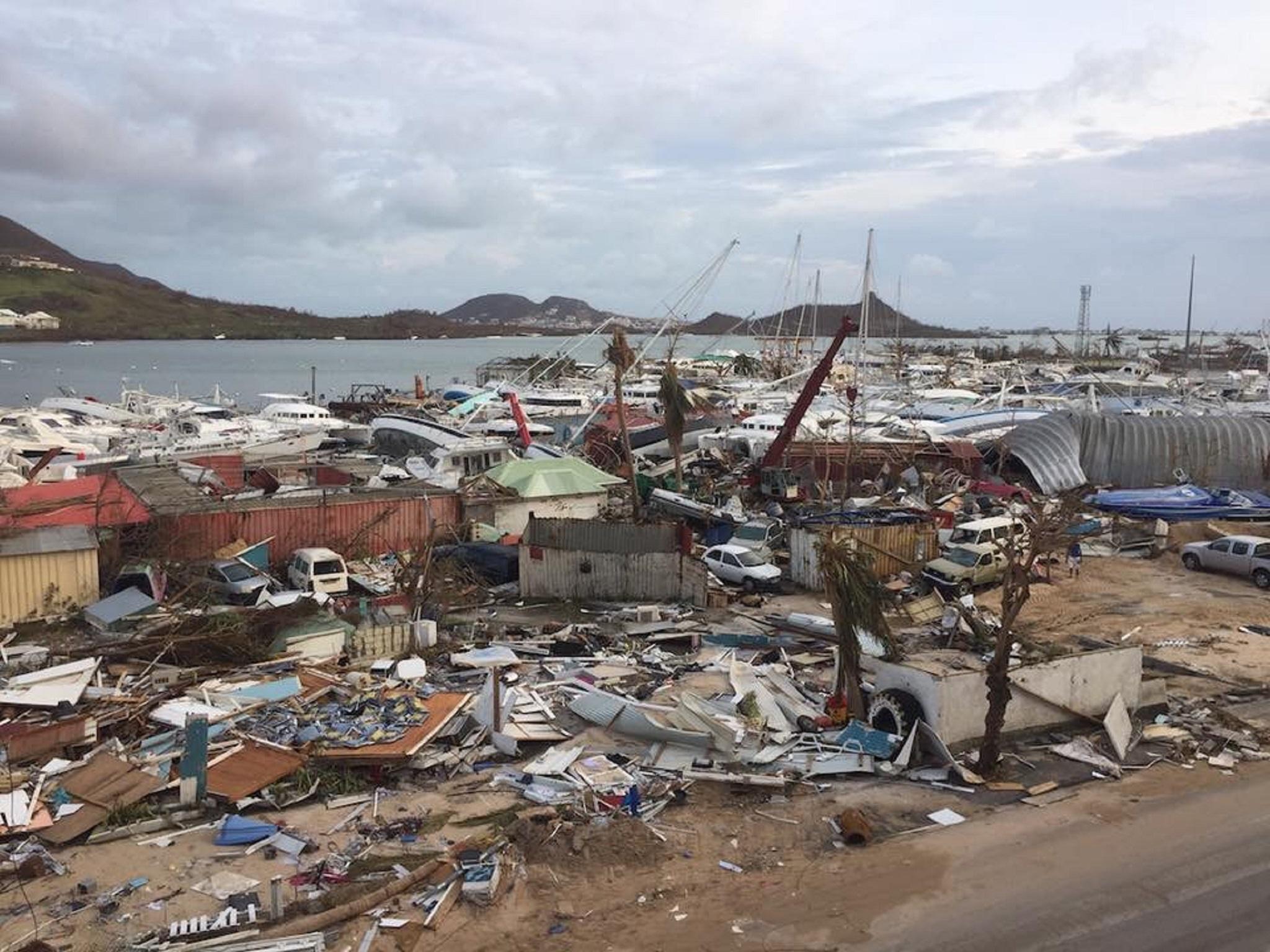Hurricane Irma: For first time in 300 years, there is no one living on the island of Barbuda
The Caribbean island is uninhabitable following the devastating storm, with rebuilding work too expensive for the local government to pay for

Your support helps us to tell the story
From reproductive rights to climate change to Big Tech, The Independent is on the ground when the story is developing. Whether it's investigating the financials of Elon Musk's pro-Trump PAC or producing our latest documentary, 'The A Word', which shines a light on the American women fighting for reproductive rights, we know how important it is to parse out the facts from the messaging.
At such a critical moment in US history, we need reporters on the ground. Your donation allows us to keep sending journalists to speak to both sides of the story.
The Independent is trusted by Americans across the entire political spectrum. And unlike many other quality news outlets, we choose not to lock Americans out of our reporting and analysis with paywalls. We believe quality journalism should be available to everyone, paid for by those who can afford it.
Your support makes all the difference.Hurricane Irma was 378 miles wide and near the peak of its intensity as a Category 5 hurricane when it made landfall and tore into the 62-square-mile island of Barbuda on the night of September 5 - 6.
Almost all the island’s 1,800 residents were evacuated to the neighbouring Caribbean island of Antigua, and those that remained on Barbuda lashed themselves to the roofs of their properties as winds soared to over 150 miles per hour.
The final wind speed reading from a local anemometer was 155mph (250kmh) before the storm blew it away.
On Barbuda the hurricane left three people dead and 95 per cent of all the buildings on the island were either destroyed or significantly damaged. More than half of the country’s residents have been left homeless.
Those who rode out the storm were subsequently evacuated to Antigua where the storm’s damage was less catastrophic.
“The damage is complete,” said Ronald Sanders, who has been Antigua and Barbuda’s ambassador to the US since 2015.
“For the first time in 300 years, there’s not a single living person on the island of Barbuda. A civilization that has existed on that island for over 300 years has now been extinguished.”
Mr Sanders described Irma as “the most ferocious, cruel and merciless storm” in the island’s history.
“This was a huge monster,” he told USA Today. “The island and the people on the island had absolutely no chance.”
Barbuda and Antigua prime minister Gaston Browne implemented a mandatory evacuation order on September 8, to ensure every single resident was moved to safety.
Speaking to the BBC’s Laura Bicker as the evacuation got underway, Mr Browne said that a rapid recovery and rebuild operation was unlikely.
He said: “I have to tell you that we definitely cannot afford it from domestic resources.We are hoping that friendly governments and international partners will step up to the plate and assist us… This is a disaster. A national disaster of epic proportions and we really need external assistance. This is not a want. This is a need.”
Reconstruction is estimated to cost about $200m, and could take several years.
Robert De Niro, who was planning a luxury hotel on the island is among those who have pledged to help rebuild.
“As devastating as it is and as terrible as it is, it will come back,” the actor told CNN.
The first modern record of Barbuda was when Christopher Columbus landed on the island on his second voyage to the Americas in 1493. At the time it was populated with Arawak and Carib indians. It is possible that the exodus following Hurricane Irma is the first time the island has been uninhabited in far longer than 300 years.

Early Spanish communities were followed by French and eventually English settlements. In 1666, Barbuda became a British colony and in 1685, the island was leased to brothers Christopher and John Codrington, who founded the town of Codrington - the largest settlement on the island.
The brothers transported slaves to Barbuda to work on sugarcane plantations in Antigua, and as numbers of slaves grew, the island became a significant exporter of slaves in the region.
Antigua and Barbuda together became a sovereign nation on 1 November 1981, and it remains part of the British Commonwealth.
The last major storm to hit Barbuda was in 1995, when Hurricane Luis made landfall as a Category 4 storm, killing three people, injuring 100 and causing widespread damage to buildings, leaving many homeless.
Join our commenting forum
Join thought-provoking conversations, follow other Independent readers and see their replies
Comments